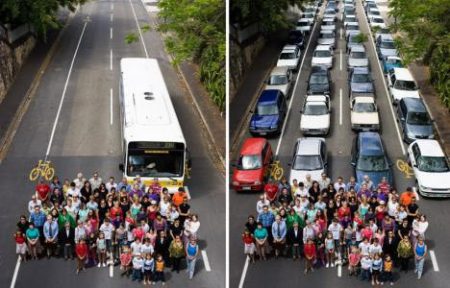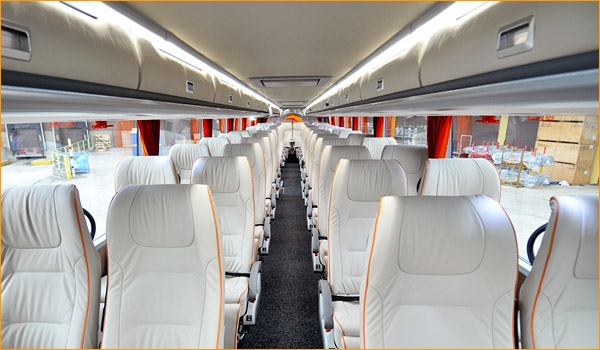The Marin County election cycle is coming to a close in two weeks. Though there is not much on the ballot that deals specifically with urbanism, there are plenty of candidates who have some strong opinions on the subject.
For the most part, I’m in agreement with the endorsements of the Pacific Sun. Progressive, thoughtful political reporting has always been their specialty, and their endorsements show how much they weighed the issues.
That said, the IJ makes some compelling cases as well. While their reporting can stir the pot at times, their editorial board has always been a bastion of calm. For endorsements, they go out of their way to interview each of the candidates and make a well-balanced decision.
Or, you may want to figure it out yourself.
Below you’ll find all the council races with Pacific Sun and IJ endorsements, links to candidate websites, video debates, and, for some races, a nugget that might have been overlooked.
Corte Madera Town Council
Three seats, three incumbents, four candidates.
LWV debate | Marin IJ Endorsement | Pacific Sun Endorsement
Carla Condon (incumbent)
Campaign website
Endorsed by Marin IJ, Pacific Sun
Writing: "Investing in Kids Pays Off"; "We Need a Local 'Council of Governments' "; "Challenging Push to 'Urbanize' Our County"
Michael Lappert (incumbent)
Endorsed by Marin IJ
Diane Furst (incumbent)
Campaign website
Endorsed by Marin IJ, Pacific Sun
Writing: "TAM Should Support Working Group's Freeway Plan"
David Kunhardt (challenger)
Campaign website
Endorsed by Pacific Sun
Though the Pacific Sun endorsed Carla Condon over Michael Lappert, as they seem to consider him arrogant, I think he is marginally less anti-urbanist than Condon. Condon has come out with fire against Plan Bay Area. Her Marin Voice pieces regarding development have, to paraphrase the Sun, bordered on the conspiratorial, which can be worse for governing than bombastics.
Fairfax Town Council
Three seats, three incumbents, four candidates.
Marin IJ Endorsement | Pacific Sun Endorsement
Barbara Coler (incumbent)
Campaign website
Endorsed by Marin IJ, Pacific Sun
Chris Lang (challenger)
Campaign website
John Reed (incumbent)
Endorsed by Marin IJ, Pacific Sun
David Weinsoff (incumbent)
Endorsed by Marin IJ, Pacific Sun
Larkspur Town Council
Three seats, one incumbent, four candidates.
LWV debate | Marin IJ Endorsement | Pacific Sun Endorsement
Kevin Haroff (challenger)
Campaign website
Endorsed by Marin IJ
Dan Hillmer (incumbent)
Endorsed by Marin IJ, Pacific Sun
Daniel Kunstler (challenger)
Campaign website
Endorsed by Pacific Sun
Catherine Way (challenger)
Campaign website
Endorsed by Marin IJ, Pacific Sun
Mill Valley Town Council
Two seats, no incumbents, four candidates.
LWV debate | Marin IJ Endorsement | Pacific Sun Endorsement
George Gordon
Jessica Jackson
Campaign website
Dan Kelly
Campaign website
Endorsed by Marin IJ, Pacific Sun
John McCauley
Campaign website
Endorsed by Marin IJ, Pacific Sun
Though neither the IJ nor the Pacific Sun endorsed Jessica Jackson, given her inexperience, Jackson is the most progressive of the four on transportation issues. She has called for greater investment in bicycle lanes and sidewalks, and an expansion of Bay Area Bike Share to Marin.
Jackson would be a strong voice for progressive transportation in Mill Valley, and she would bring that voice to county and regional agencies, too. TAM and GGBHTD both could use another progressive. It doesn’t hurt, either, that she would be the first millennial elected to a municipal council in Marin.
Novato City Council
Two seats, two incumbents, four candidates.
LWV debate | Marin IJ Endorsement | Pacific Sun Endorsement
Denise Athas (incumbent)
Campaign website
Endorsed by Marin IJ, Pacific Sun
Pat Eklund (incumbent)
Campaign website
Endorsed by Marin IJ, Pacific Sun
Steve Jordon (challenger)
Eleanor Sluis (challenger)
Campaign website
Writing: Extensive Patch comments; "Entrance to Novato versus New Bus Transit Hub's Location versus Mission Lodge, a Park, and Parking"
San Anselmo Town Council
One seat, no incumbents, three candidates.
Marin IJ Endorsement | Pacific Sun Endorsement
Matt Brown
Campaign website
Steve Burdo
Campaign website
Endorsed by Pacific Sun
Doug Kelly
Campaign website
Endorsed by Marin IJ
Something to keep in mind about Doug Kelly, from the Pacific Sun: "Kelly has the most to say about Plan Bay Area and ABAG—he's not a fan—but understands that if he's elected he'll 'need to work with them in a positive manner regardless of [his] views.' "
San Rafael Town Council
Two seats, two incumbents, four candidates.
LWV debate | Sustainable San Rafael debate | Marin IJ Endorsement | Pacific Sun Endorsement
Greg Brockbank
Campaign website
Endorsed by Pacific Sun
Maribeth Bushey-Lang
Campaign website
Endorsed by Marin IJ
Kate Colin
Campaign website
Endorsed by Marin IJ, Pacific Sun
"Making San Rafael a Sustainable City"
Randy Warren
Campaign website
Lots to keep in mind in San Rafael's race:
Maribeth Bushey-Lang’s deep technical experience with railroad issues, especially railroad crossings could prove valuable for the city, county, and region. The city of San Rafael has seats on the boards of SMART, TAM, and MTC, all of which will deal with rail issues. And, while she can't vote on the SMART-Andersen Drive crossing because she ruled on it as a judge, she believes she will be able to deal with all other SMART issues.
Kate Colin brings a wealth of experience about planning matters. Having someone from this background, who deeply understands these issues, would be of value to the city.
Randy Warren reneged on his blanket opposition to all PDAs by cautiously half-endorsing the one in downtown San Rafael, or at least promising not to oppose it if the mayor thinks it's a good idea in three years. He did this in the Sustainable San Rafael debate so you can see it yourself, and it signals some flexibility to his heretofore inflexible anti-urban rhetoric.
Greg Brockbank is an unabashed urbanist and environmentalist, two hats that are difficult to find together in Marin. That, paired with his long history of public service, would make him a good fit to return to the Council.




